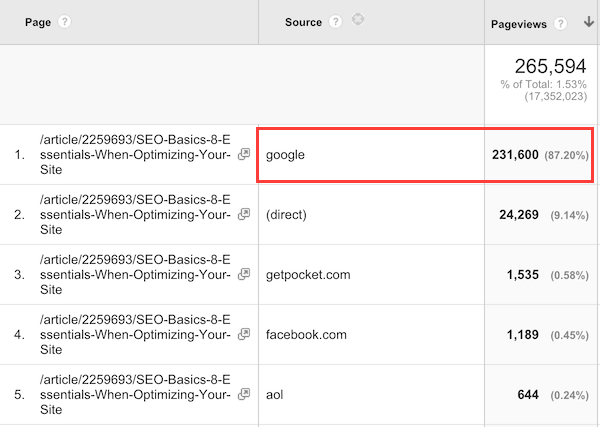The power of evergreen content for SEO
In this post I'll explain what evergreen content is, look at some examples and stats from Search Engine Watch, and demonstrate how the creation of evergreen content can reward the extra effort required.
In this post I'll explain what evergreen content is, look at some examples and stats from Search Engine Watch, and demonstrate how the creation of evergreen content can reward the extra effort required.
Creating evergreen content is a great strategy for improving your search rankings, as well as improving the quality of your content.
As I said before when looking at ways in which content marketing and SEO work together, content shouldn’t be created purely to improve search rankings, but SEO should be considered.
If done properly, content that works for your audience can also be the content that works for the search engines.
In this post I’ll explain what evergreen content is, look at some examples and stats from Search Engine Watch, and demonstrate how the creation of evergreen content can reward the extra effort required.
Well, it’s content that works over a longer period of time. It delivers traffic, leads, social shares, and can occupy valuable positions in the search rankings for months or even years after the publish date.
To do this, the content needs to be relevant to users, therefore it has to be well written, useful and to address the needs of your audience.
For example, an article explaining that ‘mobilegeddon’ is arriving may date quickly, but an article providing some practical advice on how marketers can adapt to the mobile-friendly update will still be relevant right now, 10 months on.
Evergreen content takes more time and effort, but if you do it well, it pays off.
The are a number of factors which give a post a longer shelf-life.
We have some excellent examples of evergreen content from the last decade or so on Search Engine Watch. It’s also interesting to contrast the approach with that of sister site ClickZ.
On Search Engine Watch, the content focus has been to provide practical advice and tips to help our audience understand search marketing and related topics. This doesn’t mean that news, stats and trends aren’t important, but we’ll aim to do more of the former in general.
By contrast, ClickZ has been more news-orientated (though the future focus will be more like SEW’s) and this does show in the content stats.
We can see this in the top content in Google Analytics over the last year or so (I’m being deliberately vague about timescales to avoid spilling all our secrets!).
Here’s ClickZ’s top pages:

So, the top pages are mainly the homepage and the CPM Calculator, with only two articles figuring in the top 10.
Of those, the ‘find the nearest gas station’ article isn’t exactly bringing in the kind of visitor were looking for.
However, the post on YouTube fits the bill. It’s useful (though it may be in need on an update) and it sits in the top few positions on Google for related searches.
The CPM calculator is too. Though not an article, it’s a piece which is valuable for visitors and sits there at the top of Google’s first SERP.
Here are SEW’s top pages for the same period:

The homepage dominates, as is to be expected, but not to the same extent as on ClickZ.
Aside from the SEO category page, the most popular pages are evergreen articles. This trend also continues beyond the first 10 pages.
The result is that SEW has more recurring traffic from articles than ClickZ. On top of this, it has a greater search visibility across a range of digital marketing terms. There may be other factors at pay here, but I attribute much of this to the type of content produced.
Let’s take an individual example. This post on SEO basics was initially published in April 2013. While it may be due an update, the topic of the article remains relevant even now.
This is because it answers a need – for useful information on SEO basics – which people are looking for even in 2016.
The profile of traffic over time is what we’re looking for. There’s an initial spike for a day or two after it was first (re)published on December 31 2013 , but then it settles down into a pattern.
During 2014, it has delivered up to 1,000 pageviews daily on a consistent basis.

This pattern continues into 2015. The traffic is slightly lower, but it’s still consistent.

If we look at the search rankings, we can see the benefits of creating this post in the first place. It sits at number one for ‘SEO basics’ and has been there for some time.

So, while this post may have taken more work to create than a quick piece of news or a quick write-up of a survey, it has paid dividends over time.
Over the past two to three years, it has sent more than 250,000 visitors to SEW, the vast majority as a direct result of its search ranking.

I’ve looked at evergreen content here from Search Engine Watch’s perspective, mainly because I have access to that data to show its effect.
However, the same principles will work for many businesses. For example, retailers can create evergreen content like size guides and repair tips.
This content can occupy important search rankings and deliver relevant traffic to retailers, a tactic which has been used effectively by Home Depot and eSpares.
In short, taking the effort to plan and produce quality content that addresses your audience’s needs and interests pays off.
In my next post, I’ll look at how you can find ideas for, plan and create evergreen content.